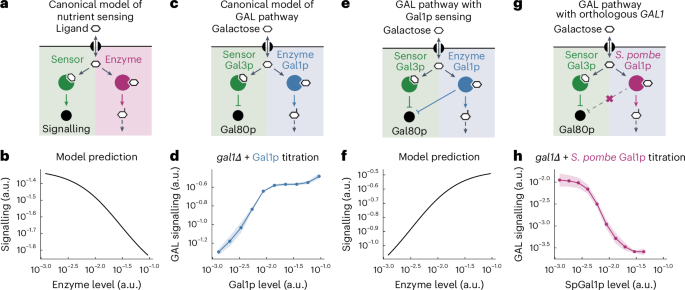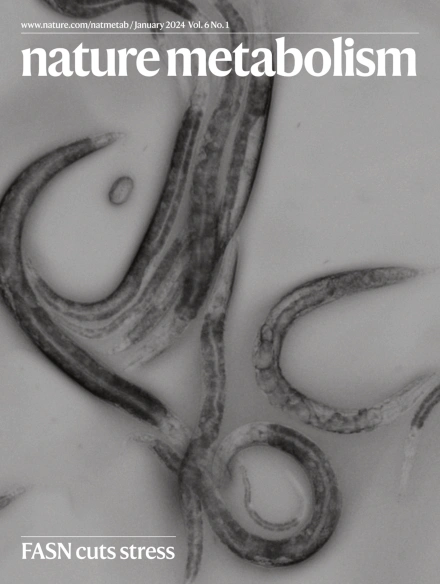The galactokinase enzyme of yeast senses metabolic flux to stabilize galactose pathway regulation
IF 18.9
1区 医学
Q1 ENDOCRINOLOGY & METABOLISM
引用次数: 0
Abstract
Nutrient sensors allow cells to adapt their metabolisms to match nutrient availability by regulating metabolic pathway expression. Many such sensors are cytosolic receptors that measure intracellular nutrient concentrations. One might expect that inducing the metabolic pathway that degrades a nutrient would reduce intracellular nutrient levels, destabilizing induction. However, in the galactose-responsive (GAL) pathway of Saccharomyces cerevisiae, we find that induction is stabilized by flux sensing. Previously proposed mechanisms for flux sensing postulate the existence of metabolites whose concentrations correlate with flux. The GAL pathway flux sensor uses a different principle: the galactokinase Gal1p both performs the first step in GAL metabolism and reports on flux by signalling to the GAL repressor, Gal80p. Both Gal1p catalysis and Gal1p signalling depend on the concentration of the Gal1p–GAL complex and are therefore directly correlated. Given the simplicity of this mechanism, flux sensing is probably a general feature throughout metabolic regulation. Palme et al. investigate the fundamental principles that enable metabolic flux sensing in yeast.


酵母的半乳糖激酶通过感知代谢通量来稳定半乳糖通路的调控
营养传感器允许细胞通过调节代谢途径的表达来调整其代谢以匹配营养的可用性。许多这样的传感器是测量细胞内营养物质浓度的细胞质受体。有人可能会认为,诱导降解营养物的代谢途径会降低细胞内的营养水平,从而破坏诱导的稳定性。然而,在酿酒酵母的半乳糖反应(GAL)途径中,我们发现通过通量感应可以稳定诱导。先前提出的通量感应机制假设存在代谢物,其浓度与通量相关。GAL通路通量传感器使用不同的原理:半乳糖激酶Gal1p在GAL代谢中执行第一步,并通过向GAL抑制因子Gal80p发出信号来报告通量。Gal1p催化和Gal1p信号传导都依赖于Gal1p - gal复合物的浓度,因此两者直接相关。鉴于这种机制的简单性,通量感应可能是整个代谢调节的一般特征。
本文章由计算机程序翻译,如有差异,请以英文原文为准。
求助全文
约1分钟内获得全文
求助全文
来源期刊

Nature metabolism
ENDOCRINOLOGY & METABOLISM-
CiteScore
27.50
自引率
2.40%
发文量
170
期刊介绍:
Nature Metabolism is a peer-reviewed scientific journal that covers a broad range of topics in metabolism research. It aims to advance the understanding of metabolic and homeostatic processes at a cellular and physiological level. The journal publishes research from various fields, including fundamental cell biology, basic biomedical and translational research, and integrative physiology. It focuses on how cellular metabolism affects cellular function, the physiology and homeostasis of organs and tissues, and the regulation of organismal energy homeostasis. It also investigates the molecular pathophysiology of metabolic diseases such as diabetes and obesity, as well as their treatment. Nature Metabolism follows the standards of other Nature-branded journals, with a dedicated team of professional editors, rigorous peer-review process, high standards of copy-editing and production, swift publication, and editorial independence. The journal has a high impact factor, has a certain influence in the international area, and is deeply concerned and cited by the majority of scholars.
 求助内容:
求助内容: 应助结果提醒方式:
应助结果提醒方式:


